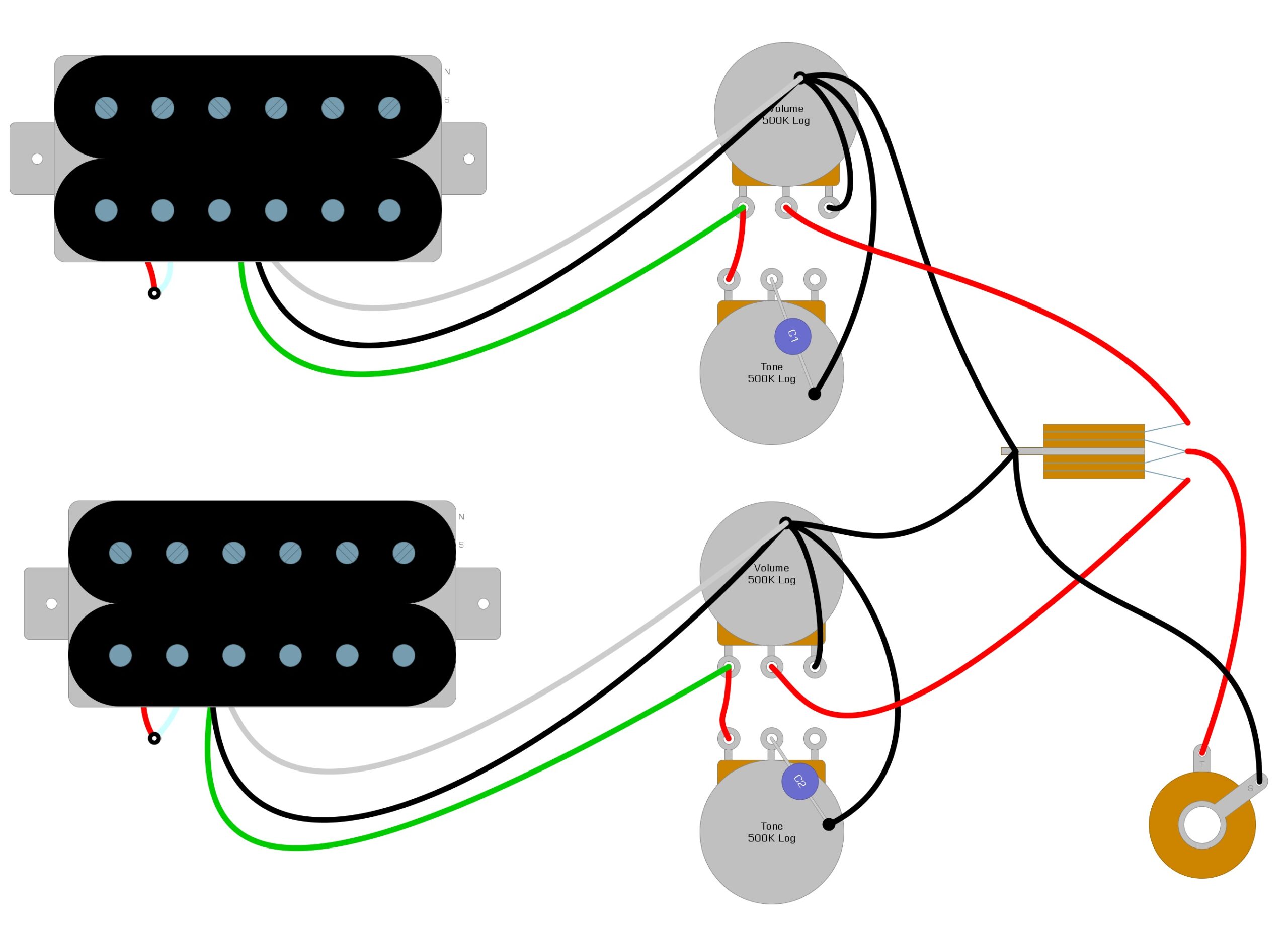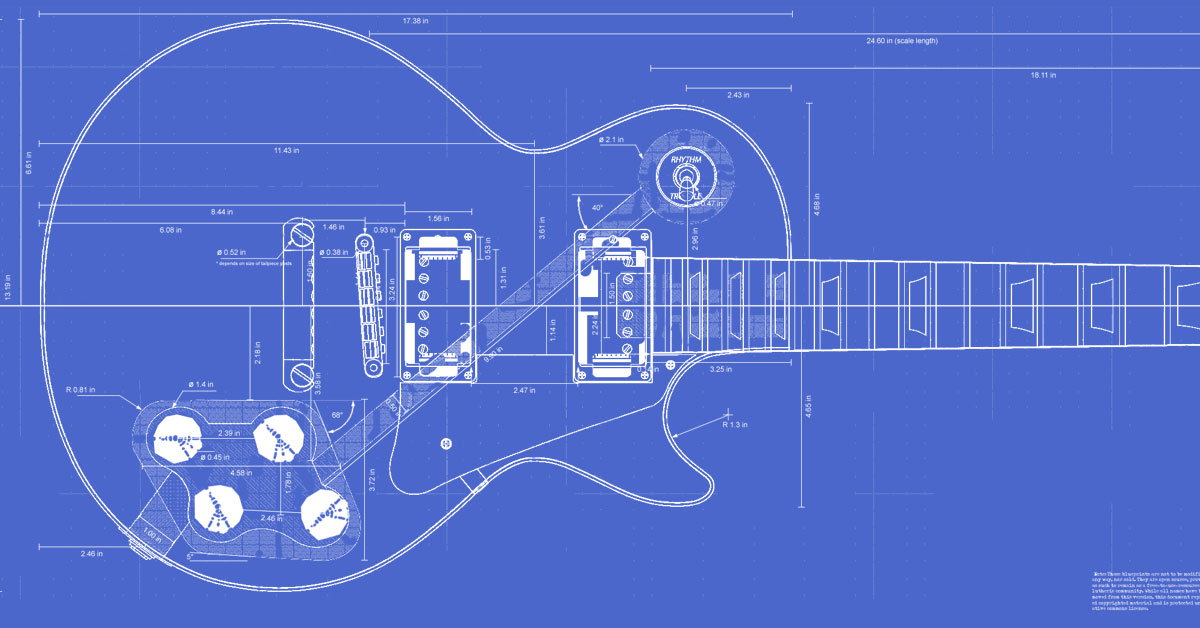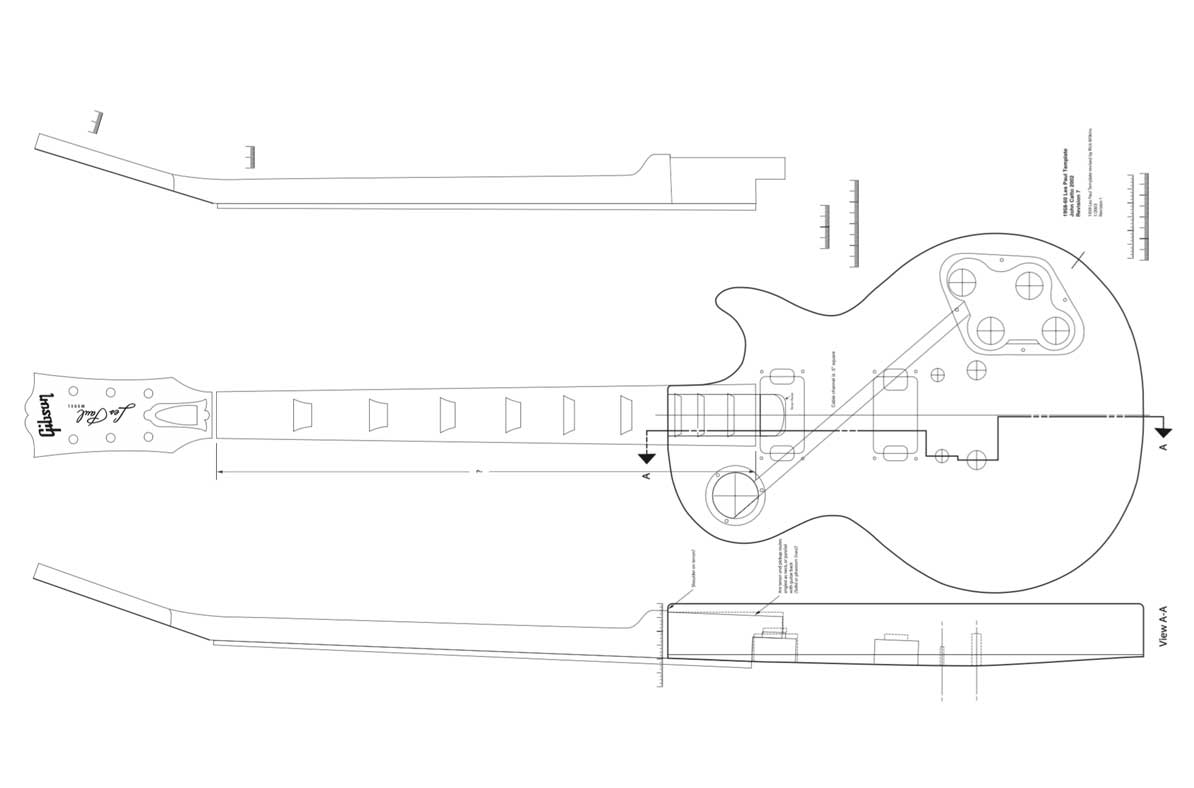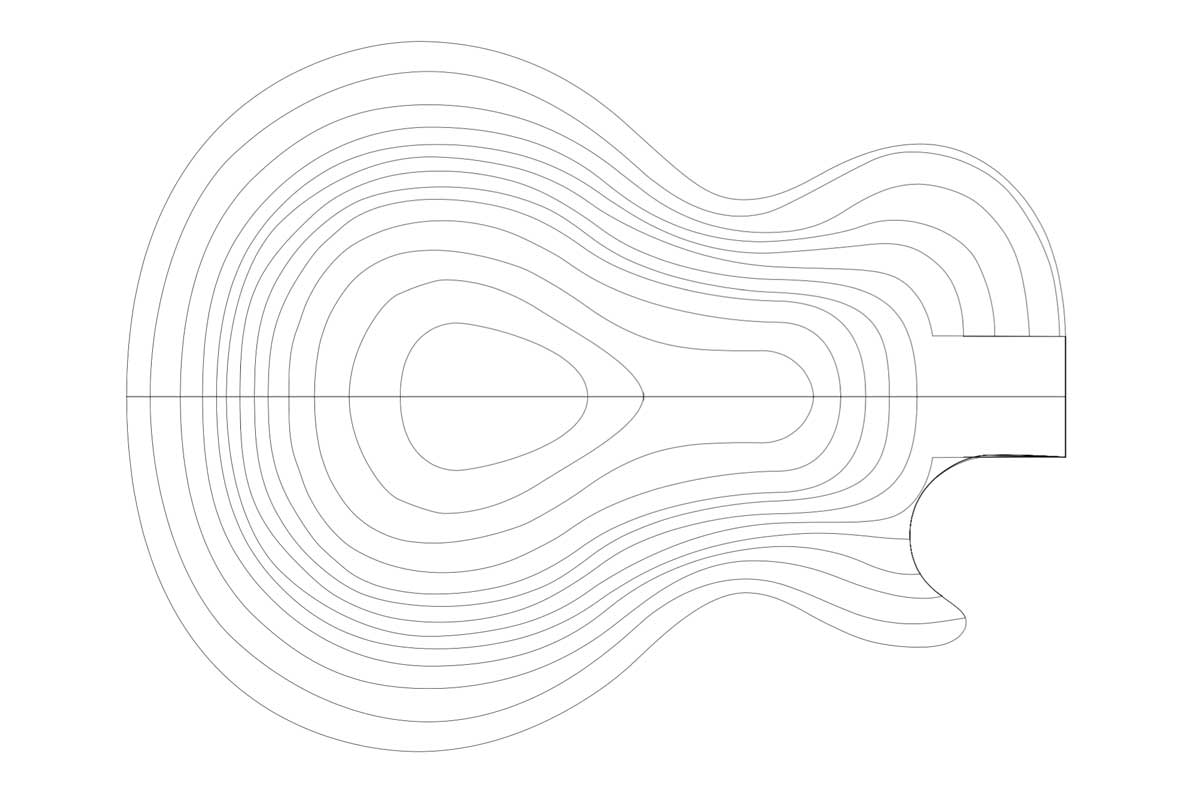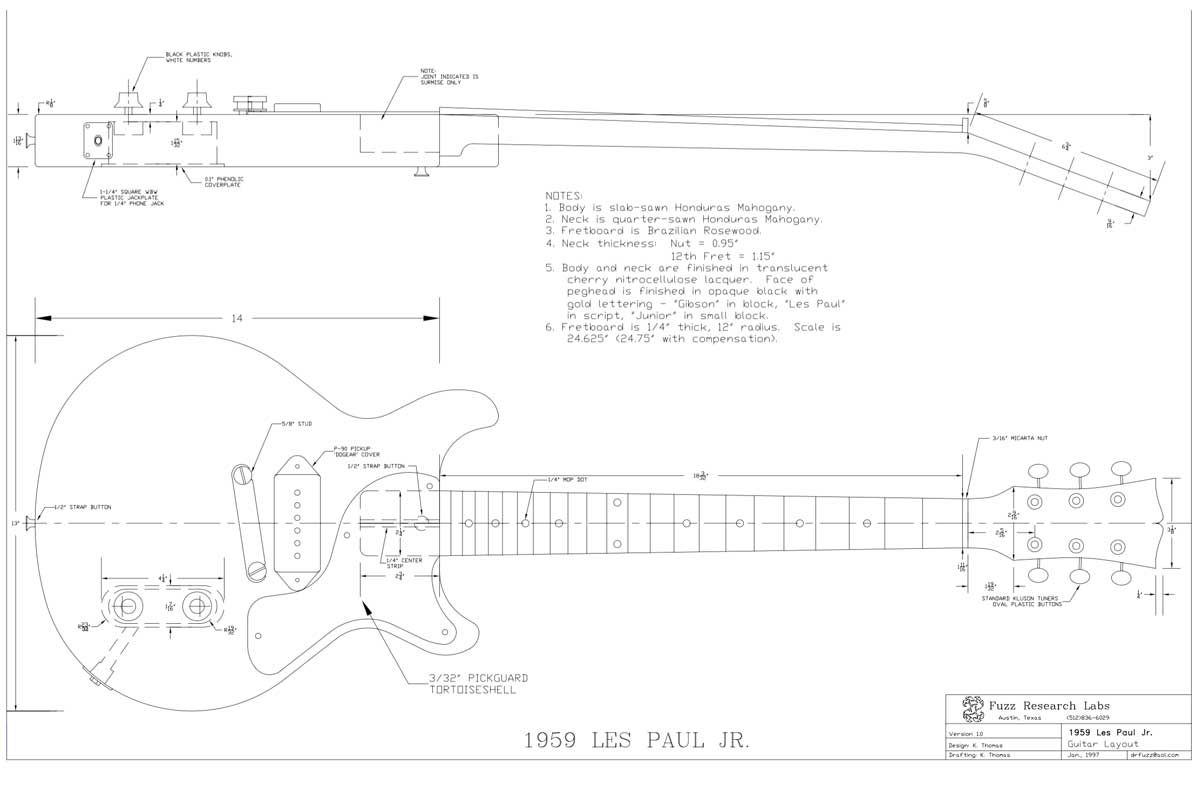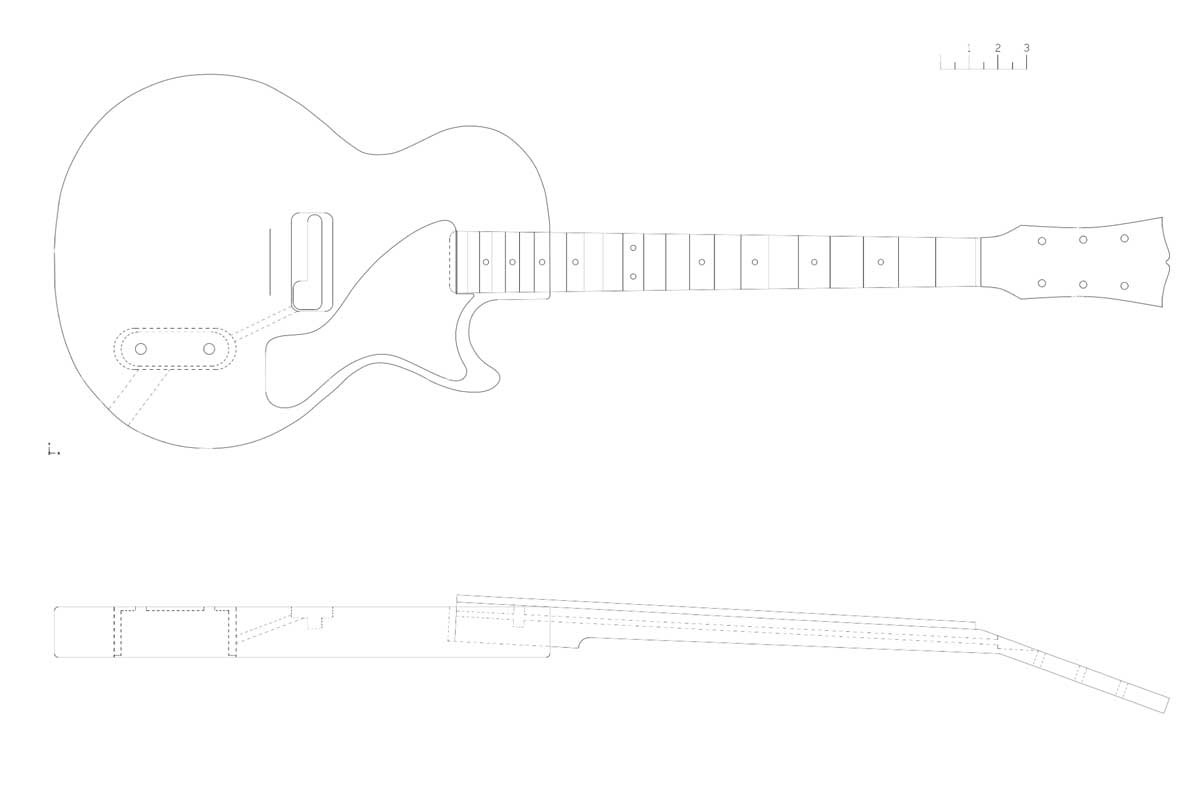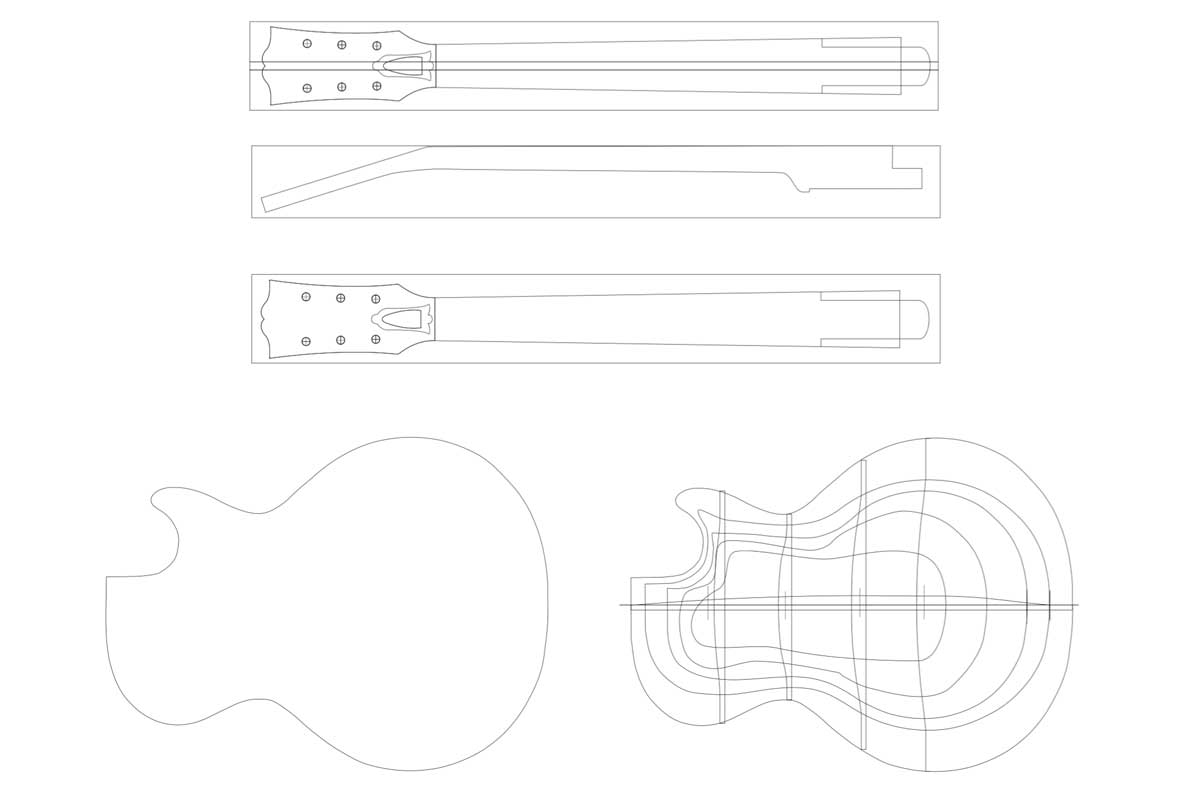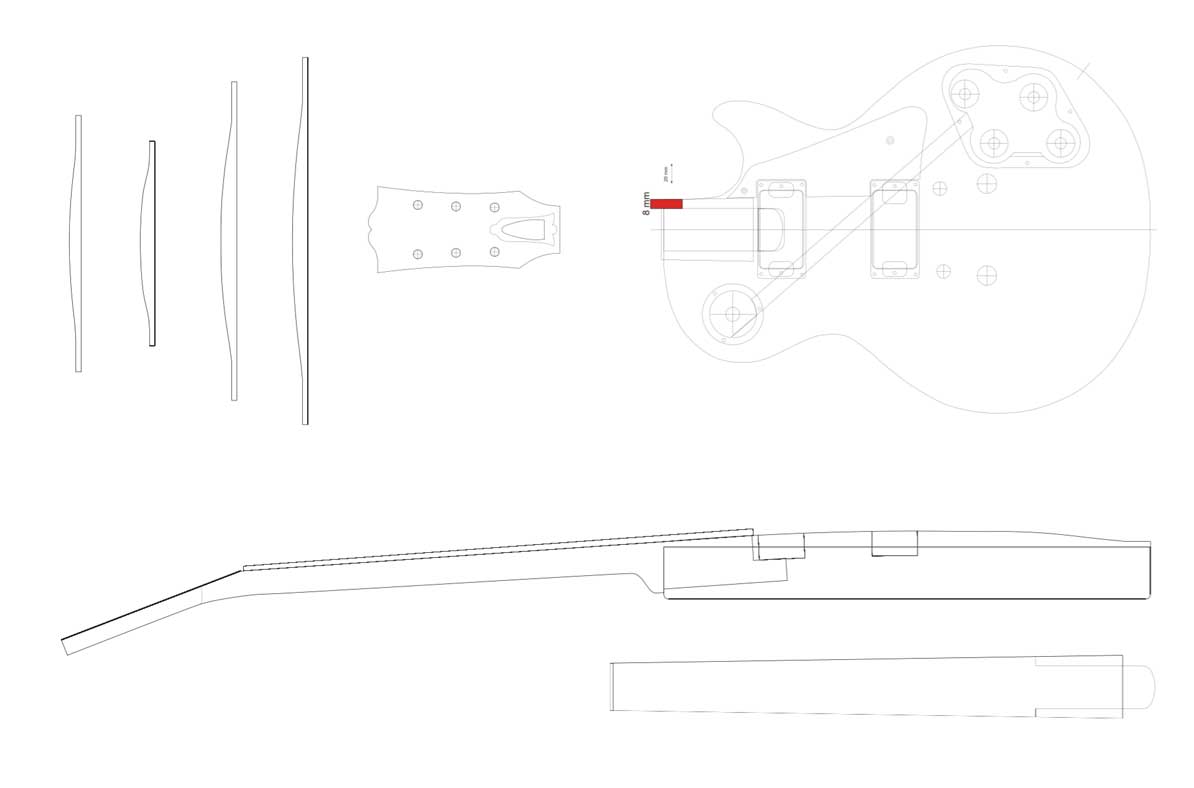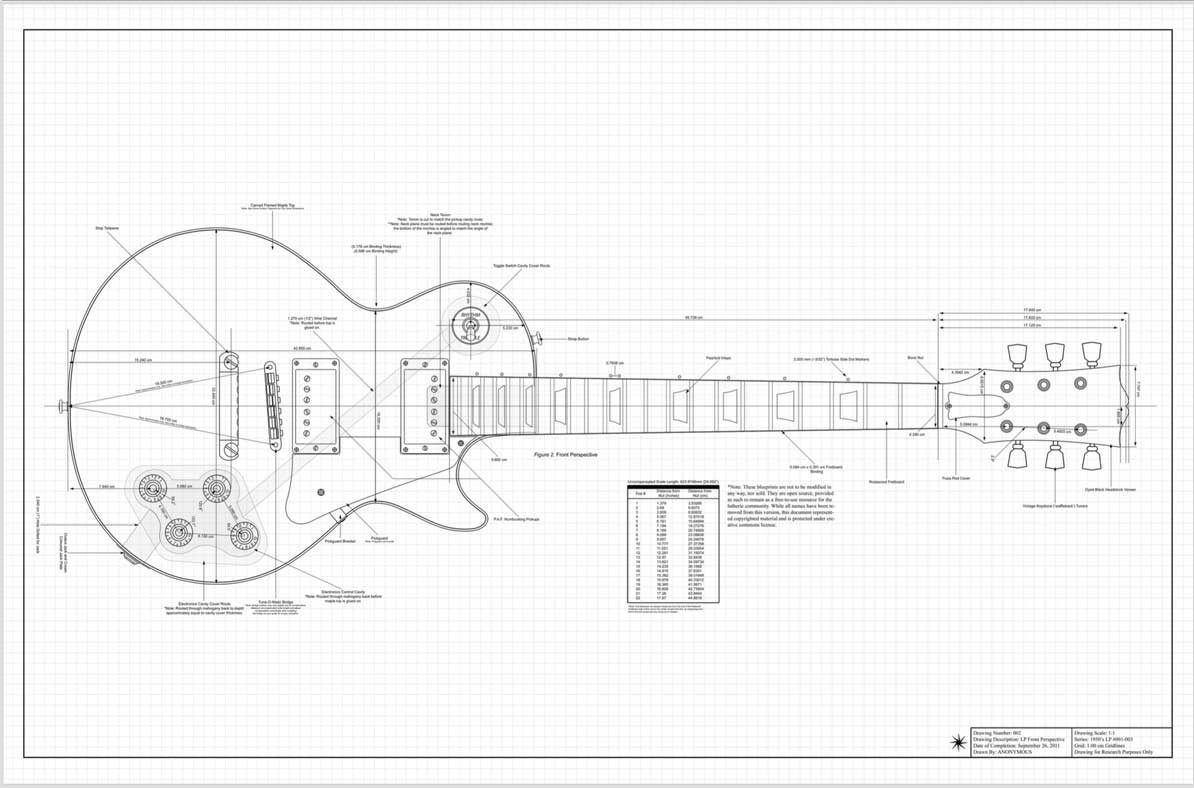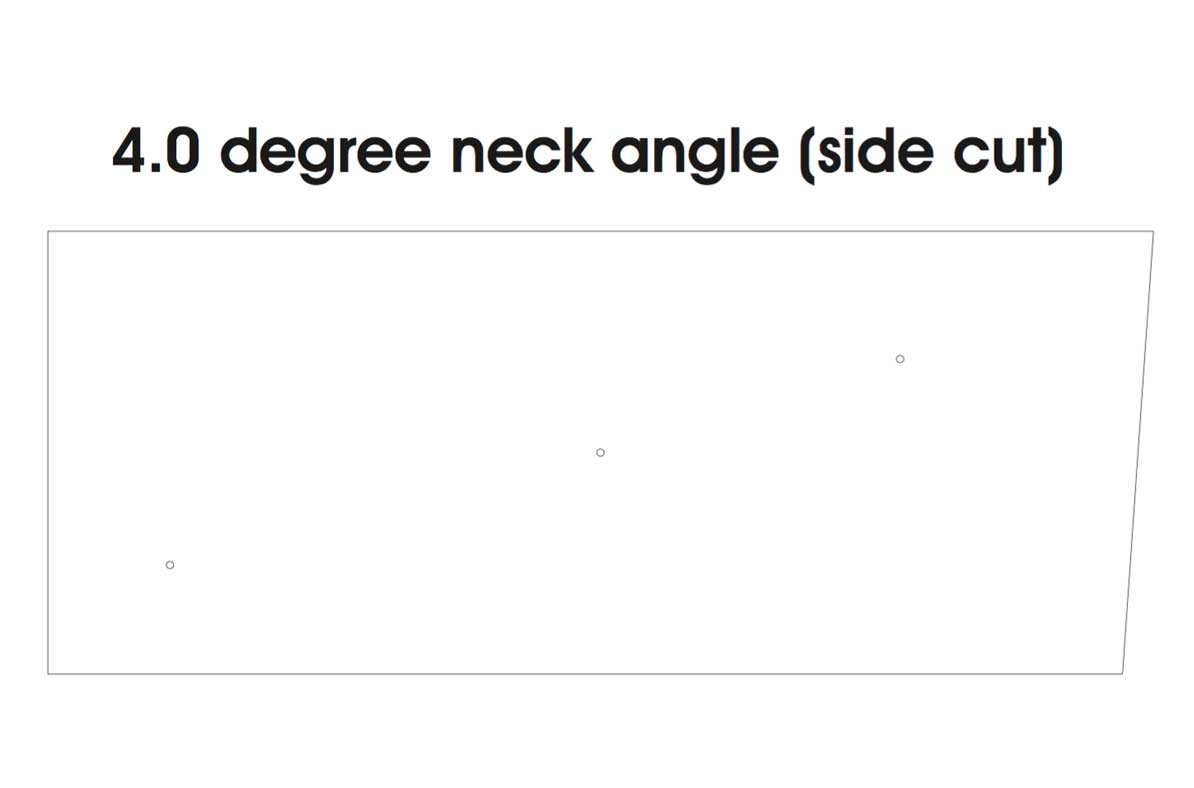- Les Paul Wiring Diagram
- Gibson Les Paul Wiring Code
- Example 1
- Gibson Les Paul Wiring Diagram
- Example 2
- Components List
- Potentiometers
- Toggle Switch
- Capacitor
- Output Jack
- Summary
- Gibson Les Paul Guitar Templates
- PDF Format
- Les Paul | ’59 – Complete
- Les Paul | ’59 – Body, Headstock
- Les Paul | Custom – Complete
- Les Paul | Front, Isolines
- Les Paul | Special – Double Cut
- Les Paul | Junior – Double Cut
- Les Paul | Junior – Single Cut
- Les Paul | Complete
- Les Paul | Complete
- Les Paul | 1950s Guitar Template
- Les Paul | ’59 Heel Shape
- Les Paul | Neck Angle Cut
- Les Paul | ’59 Neck Profile
- Les Paul | Tenon Routing Template
- Les Paul | Heel Profile
- PSD – Layers / Measurements
- Les Paul | Complete Plans
Les Paul Wiring Diagram
Let’s take a look at this Gibson Les Paul wiring diagram, so you can use it as a reference when installing new pickups or changing an old component. There are many different brands of pickups you can install into your guitar, and once you know the pickup’s wiring code, the rest of the installation is the same.
Gibson Les Paul Wiring Code
The wiring code refers to the four colored wires and one bare wire that most humbuckers have. You need to know which color is the HOT, which two colors are tied together and taped off, and which color you connect to the bare wire to create the GROUND. There are many different brands of humbucker that you can install, and many of them will use a unique wiring scheme. You will need to check your pickup’s documentation to get the wiring code.
The most important thing is to find the HOT and the GROUND so we can install it, as we see in Example 1.
Example 1
Gibson Les Paul Wiring Diagram
Once you know the HOT and the GROUND wires for each pickup, installation is straightforward. Wire your guitar to resemble the diagram in Example 2.
Example 2
The only thing that might seem strange about this diagram is that most people will not use the black wire from the third lug of the Volume to the back of the Volume pot. Most people will instead bend the lug to contact the back of the pot and solder it into place.
Components List
These are the components you are likely to need if you are starting from scratch or are unsure about the replacement part.
Potentiometers
You are going to need four potentiometers. Two potentiometers are for the Volume controls, and two are for the Tone. Since we are using humbuckers, we use 500k pots. In the early days, Gibson used a 250k pot for the Volume and a 500k for the Tone. Modern guitars use two 500k pots. If you feel the Tone is too dark, you can try 1 Mega-ohm pots or no-load pots. We recommend starting with audio taper pots, but many people like to use linear taper in the tone control.
Toggle Switch
You will need a three-way toggle switch. Any 3-way switch with three tabs on one side and a ground on the other should work, as long as it fits into the hole.
Capacitor
Most of the older Gibson Les Pauls used a .047uf capacitor on each tone control. A more common modern value is the .022uf capacitor. You may want to experiment by going even lower to .01uf as some people feel it gives a broader tone control range.
Output Jack
The output jack is a simple and inexpensive component that you can find in almost any music store.
Summary
Installing new pickups or replacing malfunctioning components is a fantastic way to learn how to modify your guitar. With the diagram as your guide, you can always return to the original setup if you start experimenting with values.
We hope that you’ve enjoyed reading over this short Les Paul wiring guide and that it’s answered any questions you’ve had. If we’ve helped, please feel free to share this Gibson Les Paul wiring diagram on Facebook and Twitter. For more articles on guitar electronics, visit humbuckersoup.com.
Our resident electronics wizard came by his skills honestly — first as an apprentice in his father’s repair shop, later as a working musician and (most recently) as a sound designer for film. His passion for guitar led him to Humbucker Soup, where he continues to decode the wonders of wiring and the vicissitudes of voltage. Ed has never taken his guitar to a shop — he already knows how to fix it.
Источник
Gibson Les Paul Guitar Templates
Download all Les Paul resources here (zip, 11.31mb). Download Les Paul project detail imagery here (zip, 4.1mb).
PDF Format
1:1 Scale | Printable | Free
Les Paul | ’59 – Complete
Front, side, neck, neck pocket, pickup and electronics routing positions. Note: this is NOT a 1:1 scale, use the one below for direct printing. This template is 1:2 scale (body height is 219mm on this version, compared to a full-scale body height of 437.6mm – enlarge accordingly before printing).
Les Paul | ’59 – Body, Headstock
Front views of the headstock and body with pickups and electronics positions.
Les Paul | Custom – Complete
All sides, cross sections, neck pocket, profile views, headstock, pickup and electronics routing, fret-markers, spec details.
Les Paul | Front, Isolines
Plans for carving the top contours.
Les Paul | Special – Double Cut
Complete plans with measurements, profile view, and cavities.
Les Paul | Junior – Double Cut
Complete plans with measurements.
Les Paul | Junior – Single Cut
Les Paul | Complete
Front / side of body and neck, + isolines.
Les Paul | Complete
Front / side, routing and placement for pickups, electronics, hardware.
Les Paul | 1950s Guitar Template
High detail, includes body, neck, and accurate fretboard measurements.
Les Paul | ’59 Heel Shape
Les Paul | Neck Angle Cut
Les Paul | ’59 Neck Profile
Les Paul | Tenon Routing Template
Les Paul | Heel Profile
PSD – Layers / Measurements
Les Paul | Complete Plans
Contains measurements, layered back / front / side of guitar.
* Unless templates are marked otherwise, they are not provided by any brand of instrument manufacturer, in spite of being made in the likeness of known branded models.
* All templates are provided free, left in tact with respect to original publishers. Unless stated otherwise, templates are provided at 1:1 scale size. Exact accuracy cannot be guaranteed.
* If you are the original author of any of the templates provided here and wish to contact us, please do so using this email address.
Источник

